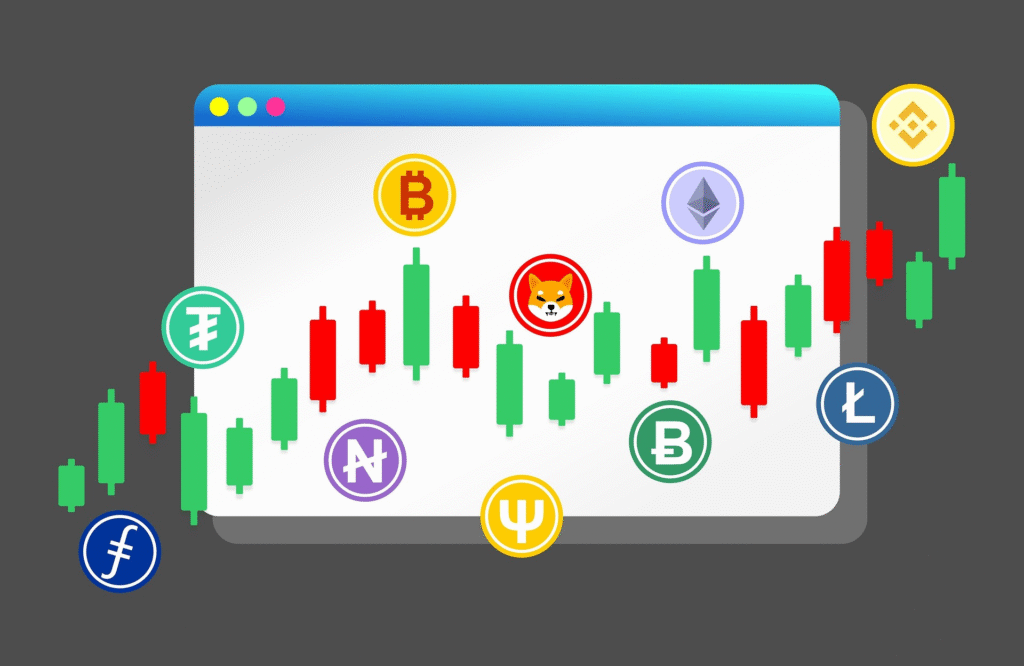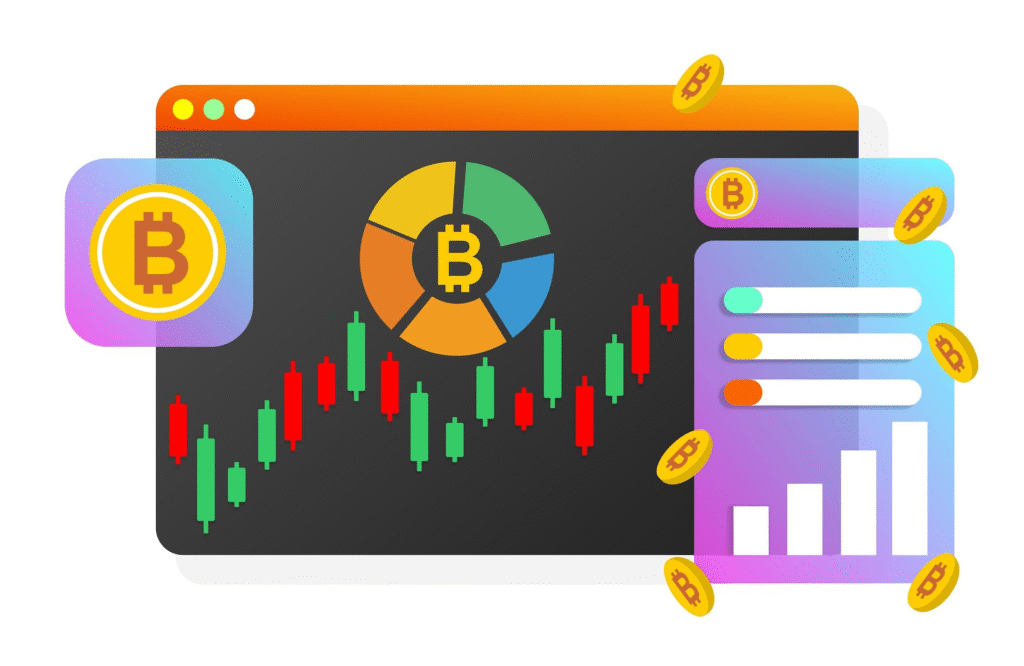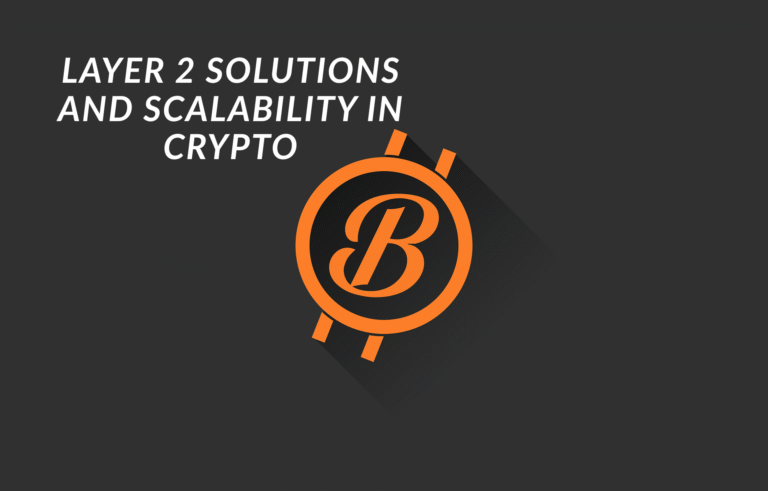Layer 2 Solutions and Scalability in Crypto: The swift expansion of digital currencies such as Bitcoin and Ethereum has exposed a significant obstacle: scalability. Congested networks result in higher transaction costs and slower processing times, which restricts blockchain’s potential for widespread adoption. By managing transactions off-chain while preserving the security and decentralization of the primary blockchain, Layer 2 solutions have surfaced to address this issue.
Technologies like state channels, rollups, and sidechains drastically lower costs and boost speed. Blockchain systems are becoming more effective, user-friendly, and prepared to handle the upcoming surge of decentralized applications and widespread cryptocurrency adoption thanks to Layer 2 developments that improve scalability.
Layer 2 Solutions and Scalability in Crypto.

Layer 2 Solutions and Scalability in Crypto: The scalability of blockchain technology is a fundamental difficulty that has been brought to light by the explosive expansion of cryptocurrencies, especially Ethereum and Bitcoin. The ability of decentralized finance (DeFi) platforms, non-fungible tokens (NFTs), and decentralized apps (dApps) to manage high transaction volumes effectively has been put to the test as millions of users flock to these networks. High transaction costs and network congestion are now frequent roadblocks that limit the accessibility of blockchain for regular consumers.
One of the most interesting developments in blockchain scalability to address these issues is the idea of Layer 2 solutions. These ideas seek to improve blockchain networks’ performance and throughput while maintaining the technology’s fundamental decentralization and security features.
Understanding Blockchain Scalability.

Layer 2 Solutions and Scalability in Crypto: Blockchain networks function on a global distributed ledger, particularly those that employ Proof of Work (PoW) or Proof of Stake (PoS) consensus procedures. In order to guarantee immutability and trustlessness, each transaction needs to be confirmed and documented by several parties.
Nevertheless, this procedure is slow and computationally demanding. For example, Ethereum was able to execute between 15 and 30 transactions per second (TPS) prior to significant enhancements, whereas Bitcoin could only process roughly 7 TPS. On the other hand, over 24,000 TPS can be processed by centralized payment systems like Visa.
This performance gap between decentralization and blockchain is called the scalability trilemma, which is the trade-off between scalability, security, and decentralization. Enhancing one frequently means sacrificing another. By expanding upon the current blockchain (Layer 1), Layer 2 solutions seek to address this conundrum and increase efficiency.
What Are Layer 2 Solutions?
Developed on top of a base blockchain (Layer 1), Layer 2 (L2) refers to frameworks or technologies that manage transactions off-chain or in secondary settings before resolving outcomes on the main chain.
These solutions preserve the security guarantees of the underlying blockchain while drastically reducing congestion, lowering costs, and increasing throughput by shifting transaction processing away from Layer 1.
In simple terms:
- Layer 1 = the base blockchain, like Bitcoin or Ethereum.
- Layer 2 = a secondary framework that operates atop it to improve performance.
Types of Layer 2 Solutions.
Numerous strategies have been explored to improve the scalability of blockchain technology. Each has advantages, disadvantages, and a unique mechanism.
(1) State Channels.
Direct off-chain transactions between two or more parties are possible using state channels. The blockchain only records the initial and final transactions.
This method significantly reduces the number of on-chain transactions, allowing for instant, low-cost payments between participants.
- Example: The Lightning Network for Bitcoin and Raiden Network for Ethereum.
- Advantages: Fast and private transactions.
- Limitations: Participants must lock funds in advance and are limited to users within the channel.
(2) Sidechains.
Independent blockchains that operate in parallel to the main chain are known as sidechains. Despite having their own consensus processes, they are linked to the main chain through a two-way bridge that permits asset transfers between chains.
- Example: Polygon (formerly Matic Network) for Ethereum, and RSK for Bitcoin.
- Advantages: Customizable environments and lower transaction costs.
- Limitations: Security depends on the sidechain’s own validators, not the main chain.
(3) Plasma Chains.
A framework called Plasma makes it possible to build child chains that are connected to the Ethereum mainnet. These child chains manage transactions on their own and send snapshots, or proofs, to the parent chain on a regular basis for verification.
- Advantages: High scalability for specific use cases like gaming and micropayments.
- Limitations: Complicated exit mechanisms and limited support for complex smart contracts.
(4) Rollups.
At the moment, rollups are the most popular and promising Layer 2 options. They post compressed data back to the main chain after processing transactions off-chain.
There are two major types of rollups:
- Optimistic Rollups: Assume transactions are valid by default and only run computations if a fraud proof is submitted. (Examples: Optimism, Arbitrum)
- Zero-Knowledge (ZK) Rollups: Use cryptographic proofs to validate transactions, providing faster and more secure finality. (Examples: zkSync, StarkNet, Polygon zkEVM)
Advantages:
- High throughput and reduced fees.
- Strong security because data is anchored to Layer 1.
Limitations:
- Complex technology and still evolving.
- Some interoperability challenges between rollups.
How Layer 2 Improves Scalability.
Layer 2 solutions improve scalability in several ways:
- Off-Chain Computation:
Most of the transaction processing occurs off the main blockchain, reducing congestion. - Batching Transactions:
Rollups can bundle hundreds or thousands of transactions into a single batch, minimizing gas usage. - Reduced Gas Fees:
By lowering the load on Layer 1, users enjoy cheaper transaction costs — often a fraction of what they would pay on-chain. - Improved User Experience:
Faster confirmation times make dApps and DeFi platforms more practical for mainstream use.
Real-World Examples and Adoption.
Layer 2 technologies are no longer theoretical; they’re actively being integrated into major blockchain ecosystems:
- Ethereum: The Ethereum ecosystem has embraced Layer 2 scaling as a core part of its roadmap. Projects like Arbitrum, Optimism, zkSync, and StarkNet are processing millions of transactions weekly, significantly lowering fees.
- Bitcoin: The Lightning Network has enabled instant Bitcoin transactions with near-zero fees, making micropayments viable.
- Polygon: Once considered a sidechain, Polygon now integrates multiple L2 technologies, including zk-rollups, to enhance Ethereum scalability.
- Major DeFi platforms — such as Uniswap, Aave, and Synthetix — have already deployed on Layer 2 networks, proving their real-world efficiency and reliability.
Challenges and Limitations.
While Layer 2 offers immense promise, it is not without challenges:
- Security Risks:
Not all Layer 2 networks inherit full security from their Layer 1 chain, making them vulnerable to attacks or validator manipulation. - User Experience and Interoperability:
Bridging assets between different Layer 2 networks can be confusing and sometimes risky due to smart contract bugs. - Decentralization Concerns:
Some solutions rely on smaller validator sets or centralized operators, which can compromise blockchain’s decentralization ideals. - Regulatory Uncertainty:
The growing complexity of off-chain solutions may raise new regulatory questions around custody, fraud, and compliance.
The Future of Layer 2 and Scalability.
Layer 2 innovation and convergence are key to the scalability of blockchain in the future. According to Ethereum’s long-term plan, known as the “rollup-centric future,” the majority of user transactions will take place on Layer 2, with the main chain mainly acting as a security and settlement layer.
Upcoming developments like Ethereum’s Danksharding and Proto-Danksharding (EIP-4844) aim to make Layer 2 even more efficient by reducing data costs for rollups.
Concurrently, interoperability is being enhanced via cross-chain communication protocols, which enable smooth asset and data transfer between several Layer 2s. This opens the door to a multi-chain ecosystem that can accommodate usability, decentralization, and scalability.
Conclusion.
An important development in the blockchain ecosystem is Layer 2 solutions. They increase the efficiency, affordability, and accessibility of cryptocurrencies by offloading transactions off crowded Layer 1 networks and utilizing cutting-edge strategies including rollups, sidechains, and channels.
Scalable infrastructure will be essential to realizing the full potential of blockchain as its use spreads throughout DeFi, gaming, supply chains, and other industries. Layer 2 is more than just an add-on; it serves as a link between the principles of blockchain technology and everyday use, guaranteeing that decentralized technology can satisfy the world’s expanding digital needs.

